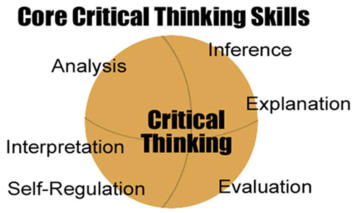To Blog or Not to Blog?
The research study by the CFTB charitable education trust 
provides us with a comprehensible case of the use of blogging by children to develop their learning. Combining empirical studies with a rationale as to why we should encourage this technology within schools, and aims to discuss the different forms of writing children can produce aside from the traditional exercise books seen within the classroom.

Many of us will have a different view as to what a blog is, below is an interesting video with some ideas to think about.
If you have your own blogs or want to comment on my block, then blog away.

Click here to read about where it all started from.
Children blogging in school.
Although limited to selective schools, year groups and possibly some children the discussion of teachers and children within the study seem to be positive about the effects of blogging on children’s overall writing. Children’s perception of blogging seems to allow them a different avenue to writing then traditional classroom writing, there is a sense of artistic freedom where they feel they can write about subjects more broadly then a specific learning intention where there is more formal assessment of their structure and grammar which seems to occur in formal literacy writing lessons. Interesting to this point is the idea of more cross curriculum writing within blogs, which is harder for teachers to assess literacy objectives then more traditional writing in class.
 ‘v’
‘v’ 
Getting children engaged in blogging seems may not be hard, the use of the the computer and the freedom of the internet often creates excitement and engagement but the report stresses that along traditional writing children need structure, guidance, prompts, themes for creating the building blocks to begin blogging. From experience blogging at school has been centered around the use of ICT suites, which often provide sterile and imaginative classroom where displays are missing which often serve to scaffold the children’s thoughts and ideas.

The practicalities of moving between classrooms, logging on and indeed children’s abilities for using computers to type on are factors which I see as prohibiting the overall success of children blogging, and addressing such issues it not necessarily for teachers.
Researching the beneficial implications of blogging at school has broadened my understanding of its benefits. 
Tse et al,. (2010) suggest there are positive connections with blogging and the reading of blogs in different languages which could be a positive factor for children with English as an additional language (EAL). Often described in schools as reluctant readers and writers Garner (2012) suggests blogging encourages boys in their engagement of writing which I have also seen from experience. It is understandable that many teachers may not feel comfortable with blogging and utilizing the experience, however, Jerles (2012) suggests that it is a powerful aid which encourages and promotes children’s overall writing ability and gives some good guidance for the apprehensive teacher in utilising blogging for children.
Although the report suggests that the short time span for blogging opportunities in school may hinder children in reaching the features of higher level writing over the traditional classroom approach, Zawilinski (2009) suggests with the right build up and preparation in place children reading online, blogging themselves, commenting and reading others blogs and being able to construct their own personal viewpoints will develop their higher order thinking that is needed for them to progress in their writing.

The ability to blog outside of school is apparent and it is interesting that the report suggests that children’s blogging from home is often more extensive, personal and imaginative. This must be an emphasis for all children, although acknowledgement on children’s availability to blog from home must be thought through and subsequently catered for in school.
Supported by the National Literacy Trust (2012), blogging has been introduced in the literacy guide for primary schools which from experience is highly recommended by many teachers and schools as an effective resource on what and how to teach children.
This new avenue of writing on blogs still needs direction and structure to be guided by the teacher to assimilate and be comparable to the more formal method of their writing. Surely this can be accommodated and acknowledgement that blogging may be more academically valuable for older children has to be recognised. Formative feedback within the classroom environment may be an issue for teachers and children that learn differently, however the ability for children to interact with each others work may help to bridge their own gaps of understanding for many.
Personally I find the act of blogging more free than traditional essay writing in university, and I acknowledge that punctuation, grammar and structure may not be best represented through blogging. However, the world is changing for children and the prevalent use of blogging in current society needs to be reflected with the children of the future.
There will always and most importantly be a central role for children learning to write as we did, but the study does suggest that the use of blogs can only help children to become better writers overall. Confidence, freedom, more engagement in writing is a benefit, blogging encourages cross-curriculum thinking when technology and information are freely available and children are online, and while excepting the implications of safety and suitability, allowing children to blog can only be seen as benefit to them and society as a whole for the future.
I hope that within my future practice the opportunity arises to engage children with blogging and that they will see the connection with their overall learning and development. Being part of a connected world can be represented through blogging, awareness of others views and being able to comment and interact with their blogs is natural extension to our current social media experience. If used positively children will be able to develop their own writing skills in a domain that feels more normal and comfortable then the traditional pen and paper world.
What an adventure!
Reference List:
Barrs, M. & Horrocks, S. (2014) Educational blogs and their effects on pupils’ writing. Education Development Trust. Reading. (Accessed: 01/07/17)
Garner, R. (2011) Blog early, blog often: the secret to making boys write properly. The Independent (Accessed: 01/07/17)
Jerles, J. (2012) Blogging in elementary school: Why, how, and what teachers can do to encourage writing. National Teacher Education Journal. 5(3) pp.85-88. (Accessed: 01/07/17)
National Literacy Trust, (2012) Literacy Guide for Primary Schools 2012-2013. (Accessed: 01/07/17)
Tse, S.K., Yuen, A.H.K., Loh, E.K.Y., Lam, J.W.I. & Ng, R.H.W. (2010) The impact of blogging on hong kong primary school students’ bilingual reading literacy. Australasian Journal of Educational Technology. 26(2) pp.164-179. (Accessed: 01/07/17)
Zawilinski, L. (2009) HOT blogging: A framework for blogging to promote higher order thinking. Reading Teacher. 62(8) pp.650-661. (Accessed: 01/07/17)
Thank you!
More Details From:
https://www.edukasyon.ph/courses/senior-high-tracks/academic
Thank you!
I couldn’t refrain from commenting. Exceptionally well written!
Extremely interesting. Thank you for giving such an informative blog.
When it comes to finding the Online Cricket Betting App in India, Khelraja takes the crown. Their user-friendly mobile application provides access to a wide array of Cricket Betting, including thrilling crash games online. It is the one-stop destination for gamers on the go.
I can’t help but admire this post.
تركيب اثاث ايكيا بالرياض
الدهانات توفر العديد من الفوائد في العديد من السياقات، فهي ليست محصورة فقط في الزخرفة والتجميل، بل لها دور مهم في الحماية وتحسين جودة الأسطح إليك بعض الفوائد الرئيسية للاستخدامات الشائعة للدهانات:
الحماية من العوامل الجوية: تحمي الدهانات الأسطح من التأثيرات الضارة للعوامل الجوية مثل الأمطار والشمس والرطوبة والتغيرات الحرارية، مما يطيل عمر السطح ويقلل من تلفه
الحماية من الصدأ والتآكل: يمكن أن تحتوي الدهانات على مواد تساعد في منع تآكل المعادن والحماية من الصدأ، مما يزيد من عمر المعدن ويحافظ على مظهره
التنظيف والصيانة: تجعل الدهانات الأسطح أسهل في التنظيف والصيانة، فتقاوم الأوساخ والبقع وتسهل عملية تنظيفها وتجديدها بشكل دوري
التحكم في درجة الحرارة: بعض الدهانات تأتي بمواد عازلة تساعد في التحكم في درجة حرارة السطح، مما يوفر توفيرًا في استهلاك الطاقة بالنسبة لأنظمة التدفئة والتبريد
“شركة دهانات